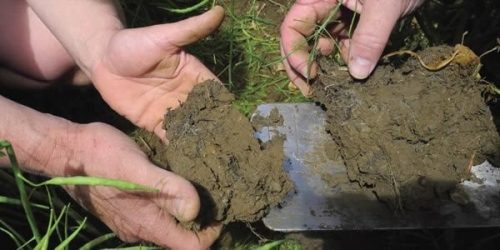A high density of earthworms is an essential component for healthy soil. They decompose matter, recycle nutrients and burrow, increasing soil organic matter content, creating pores for healthy root systems and enabling better water infiltration. Low worm counts can give an indication of issues like compaction, organic matter depletion and waterlogging. So it’s a good idea to investigate your worm community!
The best way to survey your earthworms is to participate in World Worm Week, which occurs in spring and autumn every year! Visit www.wormscience.org. This website has great resources including simple survey instructions, forms and an ID quiz, as well as online data entry and basic analysis on your worm data.
Here’s an idea of what World Worm Week involves:
- You will need a spade, piece of plastic or tarpaulin to sort your sample on, water to clean your hands, a clear pot, and a survey form.
- Mark out five sample sites in a field, in a W shape. At each site, dig out a 20x20x20cm block of soil.
- Sort carefully through each sample, counting the worms and identifying the adults (ones with saddles) using the guide provided.
- Enter your data on the World Worm Week website. An average of 10 worms is good; 16 and above is excellent – and ideally you’ll have a worm from each of the three types of soil in your sample!
Searching through a spadeful of soil for worms © GWCT

